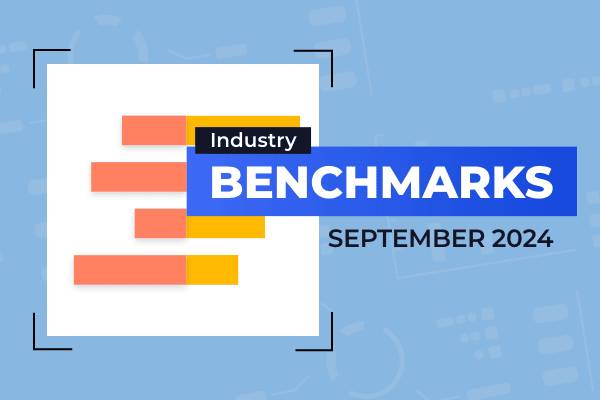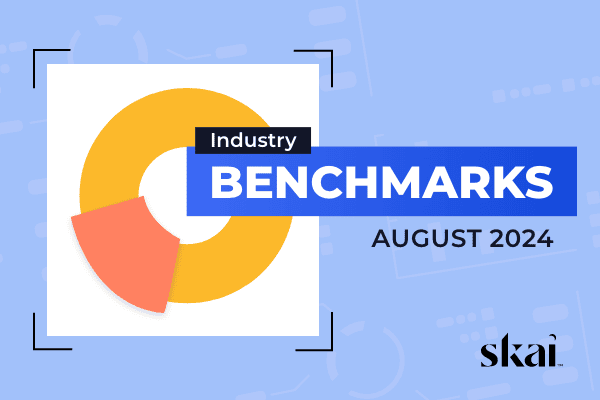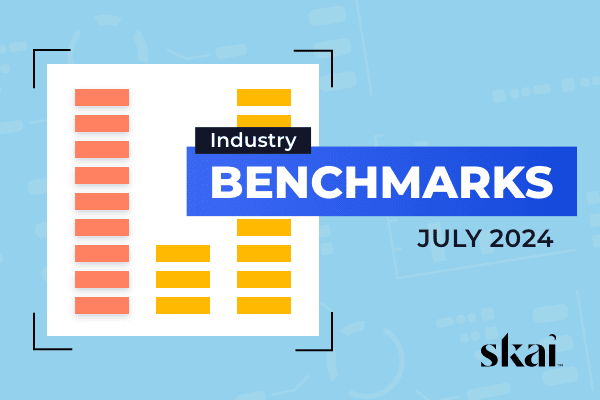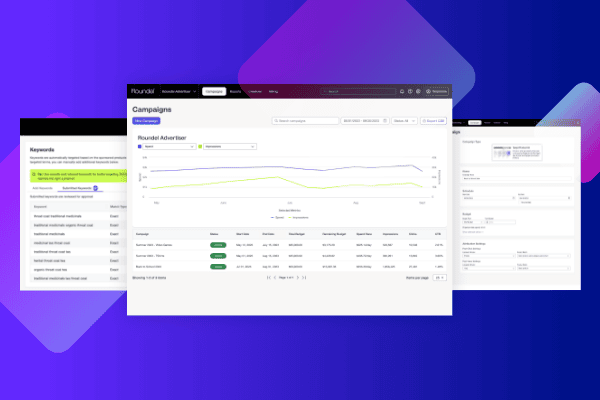Summary
Amazon Prime Day 2024 is approaching, and marketers need precise tools to measure the effectiveness of their campaigns across various channels. Amazon Attribution provides comprehensive insights into the performance of non-Amazon media channels, such as social, search, and email, allowing marketers to optimize their strategies and maximize sales.
Amazon Prime Day is July 16th and 17th, and many retail media marketers will use more than Amazon Ads to drive sales. They’ll also use non-Amazon channels, such as search, social, display, video, and email advertising.
While Amazon Ad’s standard reporting offers many metrics and insights, it’s focused on performance analytics for ads within Amazon.
Amazon Attribution is a self-service advertising measurement solution. It provides advertisers visibility into sales impact analysis across non-Amazon media channels.
Imagine the potential of harnessing Amazon Attribution to pinpoint precisely which channels drive the most Prime Day engagement and conversions during this peak period. For instance, you might find that your social media ads draw in a flood of visitors who complete their purchases after being remarketed with email campaigns. By analyzing these insights, you can strategically allocate your marketing budget to the most effective channels to maximize your sales and ROI on Prime Day.
A full-funnel Prime Day strategy starts with understanding how all your marketing efforts connect on and off Amazon to drive your customers across the finish line. With Prime Day fast approaching, there’s no better time to start using Amazon Attribution to refine your marketing strategies and drive better results.
The winding consumer journey

The path-to-purchase is a commonly used phrase to describe how a consumer becomes aware, then considers, and finally makes a purchase. While the path-to-purchase is a fairly easy concept to understand, the reality is that it’s less of a linear path and more like the children’s game Chutes and Ladders. Consumers can enter at any point in the funnel, leave, and return at another stage. This non-linear path to purchase is complex, and it is difficult for marketers to properly understand what’s working to optimize their investments.
Before making a purchase, the typical Amazon customer has likely been on quite the journey. They might have discovered your brand on social, signed up for an email list, checked out your Amazon product page, read some reviews, added your product to their cart, forgotten about their cart, and, finally, remembered the product when they were remarketed to on an off-site channel.
In the initial years, marketers were left to guess how much of an impact all their non-Amazon channels driving traffic to Amazon — such as paid search and social advertising — had on their Amazon performance. After all, Amazon is a walled garden environment, so when traffic enters, marketer conversion tracking ends. Yes, you can try ramping non-Amazon channel activity up and down to see if it correlates to more Amazon sales, but it doesn’t provide the ad-level granularity marketers need to optimize performance.
But that’s where Amazon Attribution comes into play. It takes the guesswork out of the process by providing insights into which channels drive successful actions on Amazon.
Amazon Attribution is available at no charge to the user. Note – Vendors that sell products on Amazon in the US or UK can set up an Amazon Attribution account. Once set up, they can invite relevant partners, such as agencies and marketing firms.
Here’s how it works: Amazon sellers sign up, and click tags are added to non-Amazon marketing URLs for ads designed to drive users to Amazon. Insights are measured using a 14-day, last-touch attribution model, in which last clicks get credit over recent views. Using this method, Amazon provides marketers with insights into the effectiveness of various ad campaigns, publishers, or strategies that drive traffic to Amazon.
Prepare for Prime Day by setting up Amazon Attribution now to analyze and adjust your campaigns in real time.
Get started!
Understanding which channels drive the most traffic on Prime Day can significantly boost your sales. Amazon Attribution is free and easy to use. Here’s how to get started, along with a quick guide for making the most of your insights.
All professional sellers enrolled in the Amazon Brand Registry, vendors, and agencies selling products in the US can use Amazon Attribution after registering with Amazon.
To register, follow these steps:
1. Go to the Amazon Attribution page on the Amazon Advertising website. Click “Get Started” at the top of the page or use the sign-up form under “How to get started.”
2. Provide your advertiser information. Complete the necessary fields, including advertiser name, brand name, advertiser email address, country, and associated vendor codes from Vendor Central. Once all required fields are filled, click “Submit”.
3. You’ll receive an email invitation from DSP Support within two weeks. After receiving your email, click “Accept invite & sign in,” which will take you directly to the Amazon Attribution console.
4. You can easily invite agency partners, channel specialists, and ad operations and analytics managers by selecting “User management” under “Manage” in the top navigation bar. On the “User management page,” click “Invite user,” which automatically triggers an invite after entering their email. After they accept the invite, they’ll have access and can begin creating campaigns.
Case Study: Empowering 2023 Prime Day Success with Amazon Attribution
The creative media agency, Empower, aimed to maximize its client’s (VTech) sales during Amazon Prime Day 2023 by utilizing Amazon Attribution to measure the impact of its non-Amazon marketing efforts.
Empower was working with client, VTech, to promote its LeapFrog branded educational toys, sold largely on Amazon. Empower was managing VTech’s paid search campaigns but was limited to media direct metrics. That meant, campaigns could be optimized to meet or beat KPI benchmarks, but it was impossible to make a correlation to sales.
Empower had no way to measure the impact that search media was having on VTech’s Amazon sales.
Empower was seeking a solution that would provide better insight into which keywords were most likely to convert to purchases on Amazon and which SKUs were driving better margins, considering CPC, purchase rate, and SKU price.
Skai’s Amazon Attribution integration closed the loop between search and Amazon sales, measuring the impact of the customer journey from click to purchase. This allowed Empower to put insights into action and optimize VTech’s search campaigns for the metrics that matter most. This led to an 85% increase in ROAS after the initial two months and a 64% increase in purchase rate during the same time period.
Amazon Attribution terminology
From the Amazon Ads Learning Console training on Amazon Attribution to ensure accurate descriptions:
An impression pixel is the 1×1 image code advertisers can implement on their ads to measure impressions. By measuring impressions with Amazon Attribution, you can report on conversions and sales of their products on Amazon. Impression pixels are generated by creating “Line items” and can be implemented in display, video, and email campaigns within an ad or creative impression event field.
An attribution tag is a click measurement URL that advertisers create within the Amazon Attribution console and place on their ads to measure their ad clicks. By measuring clicks with Amazon Attribution, you can report on conversions and sales of your products on Amazon. Attribution tags are generated by creating “Line items” and are implemented as the click-through URL within your social, display, video, and email ads.
A tracking template is a tracking URL that advertisers can create within Amazon Attribution to measure their non-Amazon search ad clicks. You can implement it within the “Tracking template” field in your Search campaign manager. Tracking templates are generated by creating “Line items” and can be implemented at various levels within a search campaign manager, such as the campaign, ad group, ad, and keyword level.
Pixel Applier is a browser extension tool to help advertisers save time by auto-tagging their Google Campaign Manager display and video campaigns. You can find the download link to the extension within Amazon Attribution’s Help Center, including instructions for syncing Google Campaign Manager campaigns with the click of a button.
Advertiser Performance Excel reports include a view of reporting by Amazon segments, including in-market, lifestyle, and demo audience categories. Use Amazon audience reporting to learn which Amazon audiences overlap with customers reached by your non-Amazon ads. You can also use these insights to understand performance and discover new audiences.
Amazon audiences are included within Amazon Attribution Performance Excel reports on campaigns where at least 1,000 impressions are measured, and 1 promoted conversion is driven by measured ads.
Best practices for Amazon Attribution
Before you start, here are a few tips for making the most of Amazon Attribution.
Set goals
Are you aiming to drive awareness, boost page views, or increase conversions? Amazon Attribution offers an array of metrics by which to set and measure your overall goals. Understanding your campaign objectives is essential to accurately measure the impact of your off-Amazon marketing efforts.
Test campaigns with those goals in mind
After you launch campaigns within Amazon Attribution, reflect on your goals and look for trends that connect buyers across channels. Also, look for gaps in your strategy.
For example, if social campaigns are helping consumer discover your brand without impacting sales, consider remarketing to audiences who visited your product detail page but didn’t purchase.
Put your insights to use for a full-funnel strategy
As you set goals and gain insights, start optimizing in real-time. Take the above social media example. Maybe a post received a lot of likes but very few product page views. The likes indicate that audiences are engaging with your brand, but the lower number of page views shows that it’s possible the post did not showcase the product’s value.
Get started today and make the most of Amazon Prime Day 2024 with detailed insights from Amazon Attribution.
Take the Amazon Attribution on-demand training
Amazon Ads’s Learning Console is a fantastic resource for retail media marketers. It has foundational and advanced on-demand training for Amazon Ads topics, including an Amazon Attribution class called Measure campaigns with Amazon Attribution:
This learning path of courses will provide an introduction to the Amazon Attribution beta. We’ll give an overview of Amazon Attribution, how to create attribution tags to measure your non-Amazon advertising media, and how to gain insights to optimize your media’s performance. *Amazon Attribution is currently available to vendors and registered seller brand owners which sell products on the Amazon retail site in US, CA, UK, DE, FR, IT, and ES markets.
After completing these courses, you will be able to:
- Recognize Amazon Attribution’s measurement methodology and measurable media channels
- Define the metrics available with the Amazon Attribution console
- Set up an Amazon Attribution order and implement attribution tags
- Generate reports and assess campaign performance
Note: As with all of the training, you must log in with your Amazon Ads account to access Learning Console.
Take your campaigns ever further
Directing non-Amazon ads to your product or Store pages on Amazon.com has emerged as a crucial component of every Amazon seller’s media strategy. For Prime Day, ensure your campaigns highlight time-sensitive deals and special offers to entice quick purchases.
However, you cannot guarantee that you’re maximizing your returns without accurate and effective closed-loop measurement. Amazon Attribution addresses the measurement challenge to some extent, but extracting the complete value of your data requires a fully automated solution.
Skai can help ensure that all your cross-channel campaigns direct traffic to Amazon.com for a full-funnel advertising strategy.
Contact us today to schedule a brief demo and discover how Skai can help you leverage insights from Amazon Attribution across your entire media mix.







